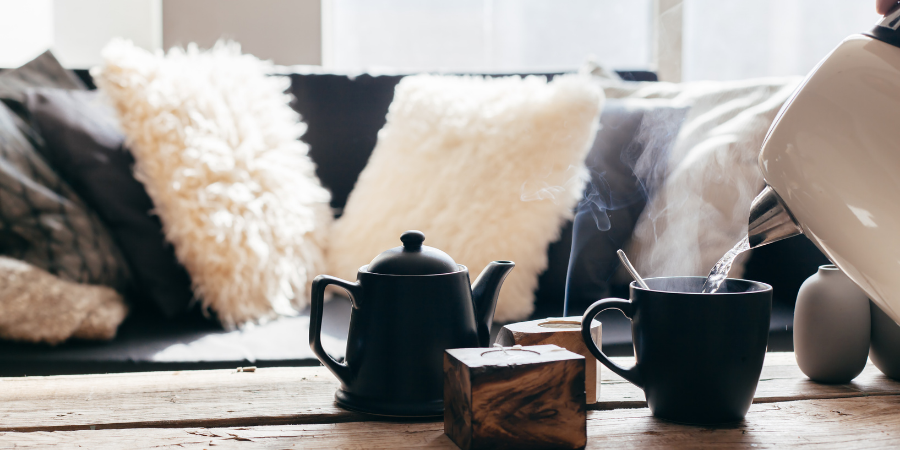FREE NATIONWIDE SHIPPING ON ORDERS $69 AND OVER
FREE NATIONWIDE SHIPPING ON ORDERS $69 AND OVER
Add description, images, menus and links to your mega menu
A column with no settings can be used as a spacer
Link to your collections, sales and even external links
Add up to five columns
Add description, images, menus and links to your mega menu
A column with no settings can be used as a spacer
Link to your collections, sales and even external links
Add up to five columns

Winter's Coming! The Cleanz Deep Clean Routine
May 25, 2021 3 min read
Winter is a time of rest and rejuvenation and we are likely to be spending more time indoors and more time in our homes.
So although we are probably all familiar with the spring cleaning ritual that we ideally perform when the sun starts to come out and the weather warms up, it is also a good healthy practice to cleanse your home in preparation for this cozy hibernation period.
A Deep Clean Routine coming into winter not only creates a more cozy, inviting and ambient space, but it also cleans up the air that you and your co-habitants breathe by removing dust, grime and toxic residues collected over time on surfaces. Here's how to do it:
THE CLEANZ DEEP CLEAN ROUTINE
Tidy up like a minimalist on a mission-
The more clutter you remove the faster the cleaning process will be. Put everything in its place and leave only what belongs. Donate, throw away or put away the rest.
Clutter piles are magnets for dust and navigating around them will make your deep cleaning more challenging.
- Ideally you will have access to a HEPA vacuum. Grab your vacuum and a ladder and start at the corner farthest from the entrance to whatever room you wish
- Starting up high, vacuum all surfaces, ceilings, walls, behind and underneath furniture, lamps and small furnishings.
- Finish with the floors as they will catch any dirt and dust etc that falls from above
Wipe EVERYTHING down like you mean it
What you’ll need:
- 2 buckets of warm water, one with 1 teaspoon of Cleanz Concentrate, 1 for rinsing
- Cleanz Concentrate
- Sponge mop or microfibre mop
- Microfibre cloths (these are the most effective to clean with)
Method:
- Dip your mop in the bucket of Cleanz solution and squeeze out as much as possible before mopping over all sections of the ceiling and walls (the surfaces should look damp after wiping but not truly wet)
- Always rinse the mop first in the clean water bucket and squeeze out the water (and the dirt, dust, toxins) before re-dipping in the Cleanz solution. Be sure to refresh the rinse bucket when it turns grey
-
Repeat the same process with your microfibre cloths on trim, corners and all furniture. For any small items and on solid, non-porous items such as ornaments and lamps, spray a clean cloth with All-Purpose and wipe clean.
- Finish by thoroughly mopping the floor the same way
Towel Dry … and presto!
- Quickly dry off any areas of excess moisture, especially wet spots on walls or the floor.
And that's it! Simply kick back and admire your work :)
There are also a few other things you can do in preparation for and during winter to keep your home and indoor air clean and healthy:
THE WINTER HEALTHY HOME CHECKLIST:
- Perform the Cleanz Deep Clean Routine above
- Clean out and around your fireplace regularly to prevent fine ash particles hanging in the air
- Make sure you have booked your annual chimney sweep for safety and function
- Ventilate! Open windows regularly (especially during and after cooking) and clean filter systems
- Add some house plants - certain varieties love to drink up toxins like carbon monoxide, ammonia and benzene and some varieties even release oxygen at night, helping you breathe better whilst sleeping. Read 15 Indoor Plants that will Purify the Air in Your Home
- Vacuum regularly (HEPA vacuum systems are the most effective) and be sure to include your upholstery like sofas, chairs and cushions. Don’t forget to shake out blankets and rugs too.
- Dust and wipe surfaces regularly with a damp microfibre cloth and soap based cleaner
- Avoid the use of pesticides and opt for preventative solutions
- Eliminate synthetic fragrances in your home - instead use naturally distilled essential oils for a fresh scent by adding them to your Cleanz cleaning solutions or use in a diffuser.
- Ensure any candles you use are natural beeswax or soy-based - cheap candles can be highly toxic
And remember to keep up with a healthy diet, plenty of exercise and fresh air to maintain a strong immune system and bright happy vibes :)
A warm and cozy winter to you all!
Leave a comment
Comments will be approved before showing up.
